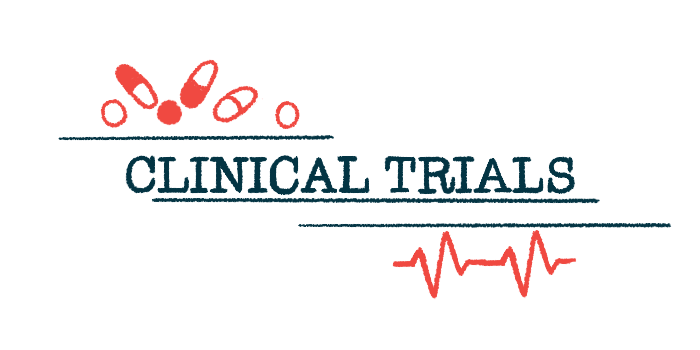Cenerimod Shows Promise in Phase 2b Study; Phase 3 Program Begins
Treatment is designed to bind to S1P1 receptors on the surface of B-cells and T-cells
Written by |

Treatment with cenerimod showed promising trends toward reducing disease activity in systemic lupus erythematosus (SLE), especially in people with more severe disease, according to data from a Phase 2b clinical trial.
The therapy’s developer, Idorsia Pharmaceuticals, announced the launch of a Phase 3 trial program to further explore cenerimod’s effectiveness and safety in SLE, based on these results. The first patient has already entered screening for Phase 3, according to the company.
“In Phase 2 studies, cenerimod 4 mg consistently showed clinically meaningful and sustained improvement from baseline on multiple measures of SLE disease activity compared to placebo,” Alberto Gimona, MD, head of global clinical development at Idorsia, said in a company press release. “I am very excited to announce that the Phase 3 program is now enrolling patients.”
Cenerimod is an oral therapy designed to bind to proteins called S1P1 receptors on the surface of B-cells and T-cells — immune cells that play a central role in the autoimmune attack that drives SLE. These cells use S1P1 receptor proteins to help coordinate their movement. By binding to them, cenerimod “traps” cells in specialized immune structures called lymph nodes, preventing them from driving disease elsewhere in the body.
“Cenerimod acts on both T cells and B cells and at a fundamental stage in the autoimmune response, meaning it has the potential to alter the course of lupus,” said Martine Clozel, MD, chief scientific officer of Idorsia.
Following promising early results from a Phase 2a study (NCT02472795), Idorsia sponsored a Phase 2b clinical trial called CARE (NCT03742037) that enrolled 427 adults with moderate to severe SLE.
Results of CARE study
Participants in CARE were randomized to take cenerimod at one of several doses — 0.5, 1, 2, or 4 mg per day — or a placebo, for 18 months. After the first six months, those on the highest dose were re-randomized to take either a placebo or the therapy at 2 mg/day. This was done to assess the safety of stopping treatment and to evaluate the reversibility of its effects on blood cells.
The study’s main goal was to assess its effect on a standardized measure of SLE severity, called the modified Systemic Lupus Erythematosus Disease Activity Index 2000 (mSLEDAI-2K). At the study’s start, all patients had a score of at least six on this measure.
Results showed that, compared with a placebo, the mean decrease in mSLEDAI-2K after six months was more than a point for those on the highest dose, suggesting less severe disease with treatment. However, this difference was not statistically significant after adjusting for type 1 errors (statistical measures meant to rule out the possibility of false-positive results).
Other measures of disease activity also generally favored 4 mg/day cenerimod over a placebo. For example, more patients on the high dose were responders according to the SLE Responder Index (SRI-4) after a year.
The effect of cenerimod on disease activity was generally more pronounced among those with more severe disease when they entered the study, the researchers said. The effect of therapy also was higher in patients with a higher type 1 interferon gene expression signature status, a marker of inflammatory activity.
“In our Phase 2b study, patients with a high interferon-1 gene expression signature showed greater levels of improvement, this gives us even more confidence in the potential of cenerimod because this pathway is already validated in the treatment of lupus,” Clozel said.
Safety data from the Phase 2b study showed cenerimod was generally well tolerated at all doses. The most common side effects were abdominal pain, headache, and lymphopenia (low white blood cell counts). As expected, given how the therapy works, immune cell counts were generally lower at higher doses, though the reduction in immune cells was not associated with an increased rate of infection compared with a placebo.
“Across all doses including the 4 mg dose, cenerimod was well tolerated with an adverse event profile consistent with the mechanism of action, allowing us to move forward with the dose that has demonstrated optimal efficacy,” Gimona said.
Goal of OPUS study
The new Phase 3 program, called OPUS, plans to enroll about 840 adults with moderate to severe SLE at sites across 25 countries, including Japan. Participants will be randomly assigned to take cenerimod at 4 mg/day, or a placebo, for one year, on top of standard-of-care therapy. The main goal will be to evaluate the effect of treatment on mSLEDAI-2K scores after a year.
After the placebo-controlled portion, participants will have the option to enroll in an open-label extension, where all will be treated with cenerimod for at least one more year.
Building off of the findings from CARE that the therapy may be more effective in those with more severe SLE, the OPUS program will include revised eligibility criteria and a 60-day screening period to ensure enrollment of patients with truly moderate-to-severe disease.
“With OPUS investigating an oral treatment option for lupus, we are offering a potential alternative to currently available biologic treatments that are either self-injected or received via infusion in hospital on top of standard care,” Gimona said.
Cenerimod has been given fast track status in the U.S., a designation that aims to speed up the development and regulatory review of therapies that treat serious conditions and for which there is a high unmet medical need.






